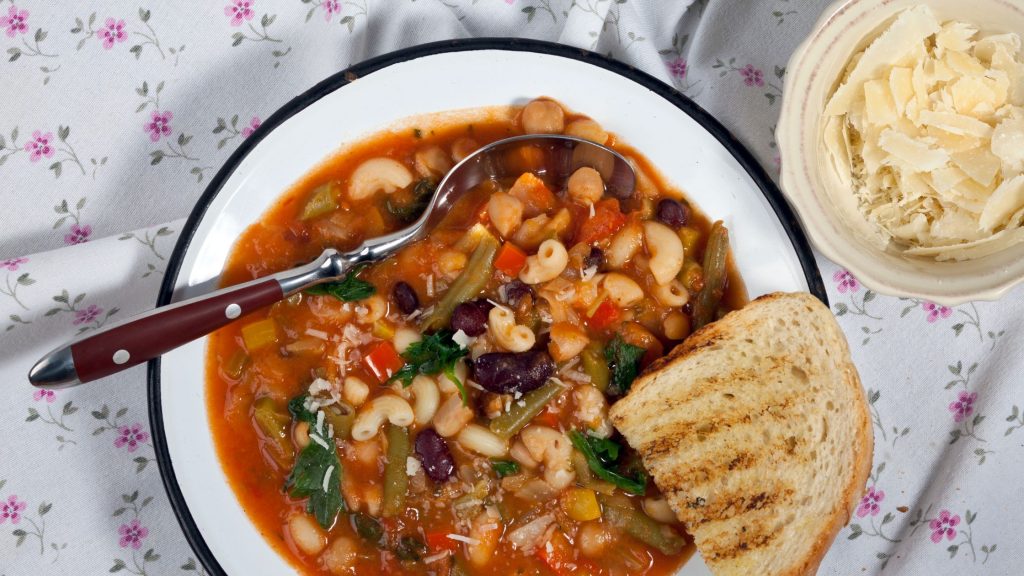Through my years in clinical practice, I have worked with many women who, soon after entering their 40s and having spent a lifetime looking after their families and focusing on their work, decided that it was time to focus on their health. They started eating a healthy diet, taking a bunch of supplements, and exercising regularly. Still, after a few months of diligent (hard) work, frustrated at the lack of results when it came to their weight loss and energy management, they decided to ask for help.
During their first consultation, most of my clients complained about big drops in energy in the middle of the morning, immediately after their lunch and in the middle of the afternoon. Once home, they were feeling completely drained and without an ounce of energy to manage to do anything else, even the enjoyable bits! Their energy was like a yo-yo, going up and down all day (more down than up, they complained).
And with the energy going down, so were their focus and moods, whilst the weight was definitely going up!
On paper, everything they were doing was OK and didn’t justify the lack of success with weight loss and energy management. Still, once I had a chance to spend some time with them during our consultation, it was clear that they were making three mistakes that sabotaged their healthy efforts.
What emerged was that there were three common hidden diet traps that rob these women of their success:
#1 Choosing more than one healthy high-glycemic foods
#2 Time and frequency of food intake
#3 “Multi-tasking” eating

Mistake #1
Choosing more than one healthy high-glycemic foods
High glycemic foods are the type of foods that release high amounts of sugar into your bloodstream very quickly. There are clearly unhealthy ones, such as processed foods, white bread, pastries, and refined flour products… but there are also healthy types of foods, such as some types of vegetables and grains, which are high in starchy and simple carbohydrates. These, too, can cause rapid spikes in blood sugar levels.
This leads to a high secretion of insulin (the hormone that controls the amount of blood glucose in circulation). The tangible and immediate consequences of these biological events in your body are energy highs and crashes, increased hunger and cravings. The long-term consequences are weight gain and a myriad of other more serious health problems.
It’s like being on a rollercoaster. High glycemic foods send you on a thrilling but short-lived high – only to plummet you down quickly.
In most cases, those women chose healthy foods, mindful of avoiding white breads, refined grains and processed food, but still suffered from blood sugar imbalances because their mistake was to combine in the same meal different types of healthy carbs rich food, which brought the total glycemic value of their meal too high and caused a spike even from very healthy food choices.
For example, they were having a soup made with carrots, sweet potatoes and rice barley or maybe they were having a homemade curry with chickpeas, carrots, potatoes and brown rice. All very healthy ingredients, but the combination was spiking their blood sugar, and their weight was going up and their energy going down.
How to avoid mistake #1:
Choose whole grains, legumes, and fibrous vegetables, which release sugar into the bloodstream more slowly, providing a more stable energy source.
Combine Foods Wisely: Pair them with proteins or healthy fats to slow down sugar absorption and stick to one choice only whenever possible.
Plan Balanced Meals: Ensure each meal contains a good balance of protein, fat, and fibre to stabilise blood sugar levels.
In my programme, The Fit and Focused Formula, my clients learn how to do this down to a T so they know exactly how to pick ingredients and combine them to avoid sugar spikes.
They also learn how to choose from a menu in the restaurant and in different social settings, so their blood sugar stays stable so they can feel great energetically, and they start shedding the pounds of extra fat accumulated.

Mistake #2
Timing and Frequency of Food Intake in Relation to Circadian Rhythms
Think of your metabolism as a clock. Eating in sync with this clock ensures all gears work efficiently, but eating late and too often can throw the whole mechanism off balance, affecting your energy, hindering your fat burning and your capacity to digest and, most importantly, to absorb the nutrients from your diet.
When you eat and how often you eat have a huge influence on your metabolic flexibility. Having metabolic flexibility means that your body can use any energy source available to produce energy, the glucose that comes from the meal you have just eaten or the fat that is stored in your body.
If you eat too often, even if you greatly reduce the amount or the calories, you never give your metabolism a chance to learn how to tap into your body fat storage to produce energy because there is a constant supply of glucose from the food you eat. Indeed, the body’s preferred fuel is glucose because it is easier to access and process. When you eat frequently throughout the day, you make it even easier for your metabolism to stay stuck into glucose-burning mode and make it impossible for your body to become a fat-burning machine!
When you eat late at night, this also stops your body from being metabolically flexible.
This is even more real when we reach our 40s because our ability to deal with sugar becomes more challenged as we become more insulin-resistant. This means that our body becomes more “intolerant” to sugar, and it finds it difficult to utilise it for energy production.
On top of this, when we eat too late at night, our body clocks initiate the chemical processes necessary to wind down and go to sleep, reducing our digestive capacity and our blood sugar regulation. This means that even during the night, when our body could have the opportunity to tap into the fat reserve and be metabolically flexible, this does not happen.
Eating late at night also compromises the quality of sleep. Poor quality or lack of sleep has a negative effect on our hormonal balance on the following day, making us more hungry …amongst other hormonal chaos caused by poor sleep…
How to avoid mistake #2:
Align meal times with circadian rhythms (your Body Clock) as much as possible. Try to eat your larger meal during the day when your metabolism is more active, and reduce your food intake as evening approaches.
Make sure that, especially with your dinner, you choose the right type and amount of starchy carbs and always avoid processed food, anything that is made with white flour, and sugary foods! The worst time of the day to eat pasta, risotto and dessert is at dinner!
Your dinner should be at least 3 hours before going to sleep.
Avoid snacking in the evening. I have done comprehensive training on how to do this. CLICK HERE to read it.
Have the first meal of the day at least 12 hours after finishing your dinner. This is not fasting. It is simply respecting your circadian rhythms. If you can wait 1 to 2 hours after waking up to have your first food of the day, you allow your pancreas and digestive system to get into action and facilitate your digestion and absorption of nutrients from that meal.
Do not eat too often. Constantly snacking will stop your metabolic flexibility, and you will never get into fat-burning mode.

Mistake #3 Rushing Your Meals
Eating too quickly can lead to inadequate chewing and overeating, as the stomach doesn’t have time to signal fullness to the brain. This can result in consuming more calories than needed, hindering weight loss effort and your digestion, and making you feel tired after your meal… post-lunch nap, anyone?
When you engage with your food using all senses in a relaxed, calm manner, thinking about it, smelling it, observing the colours on your plate and taking time to chew it and savour each bite, you will magnify your digestive powers. Remember that a relaxed eater has a full digestive force, which means better management of appetite and hunger signals, fewer cravings and no after-meals slumps in energy.
How to avoid mistake #3
When at work, always have your lunch away from your desk!
When it is time to eat, you just do that! No phone calls, no internet surfing, no FB peeking…just enjoy your food! Eat mindfully, enjoying every single bite.
At home, make sure to eat sitting at the table and not in front of the TV. Being distracted by what’s going on the screen will stop being mindful about the food and how you eat it.
Take a couple of minutes to practice some deep belly breathing before taking your first bite. Breathing with intention will switch your nervous system almost immediately from a stressful state ( fight or flight) to a more relaxed state ( which is called …surprise, surprise, rest and digest!)
After your meals, whenever possible, move your boy. I will never tire of repeating how beneficial a short 15-minute walk is after our meals. It helps your body to deal with the sugar in circulation more efficiently by shunting it into your muscle tissues, and whilst there…it is locked as glycogen ( a reserve of glucose for your muscle) and cannot be converted into fat. Sounds magic, no? Well, I think it is!
I hope you have enjoyed this blog, and if you have found it helpful, please share it with other friends who you know could benefit from it. Invite any of your friends to join our FB community. I really appreciate your help in spreading this work so more women can benefit from fab energy and a healthy body going through perimenopause and menopause.

References
Ludwig, D. S., et al. (2018). Dietary glycemic index and obesity. Journal of Nutrition.
McHill, A. W., et al. (2017). Impact of circadian misalignment on energy metabolism during simulated nightshift work. PNAS.
Andrade, A. M., et al. (2008). Eating slowly led to decreases in energy intake within meals in healthy women. Journal of the American Dietetic Association.





0 Comments